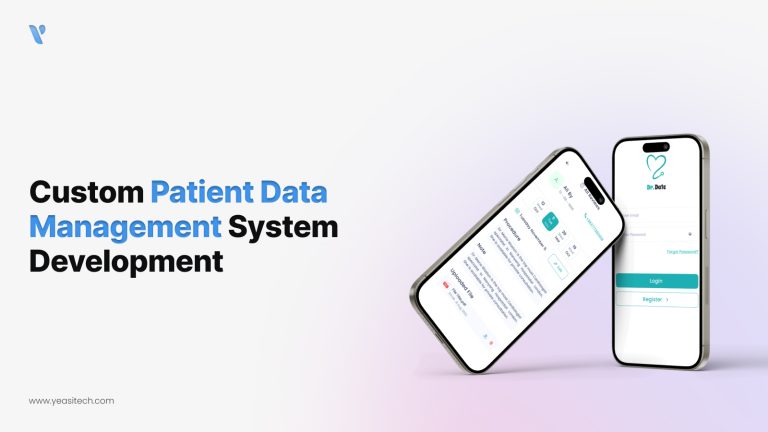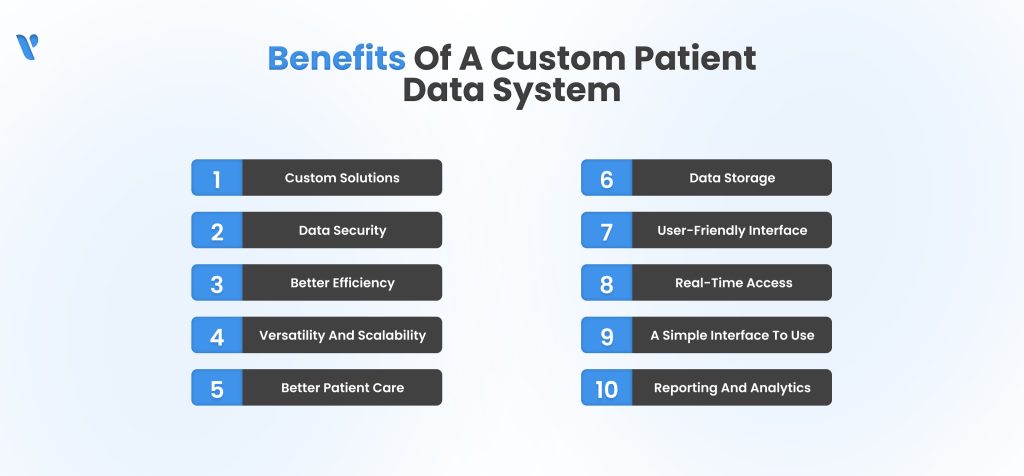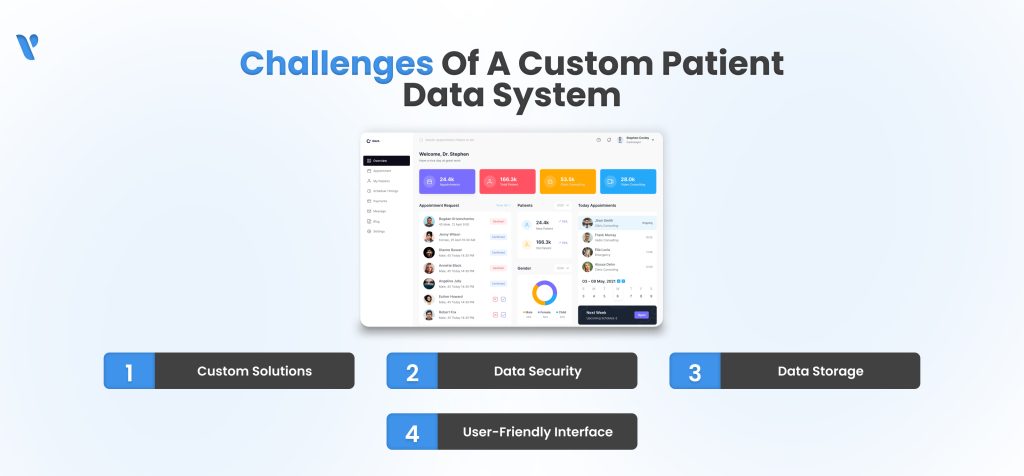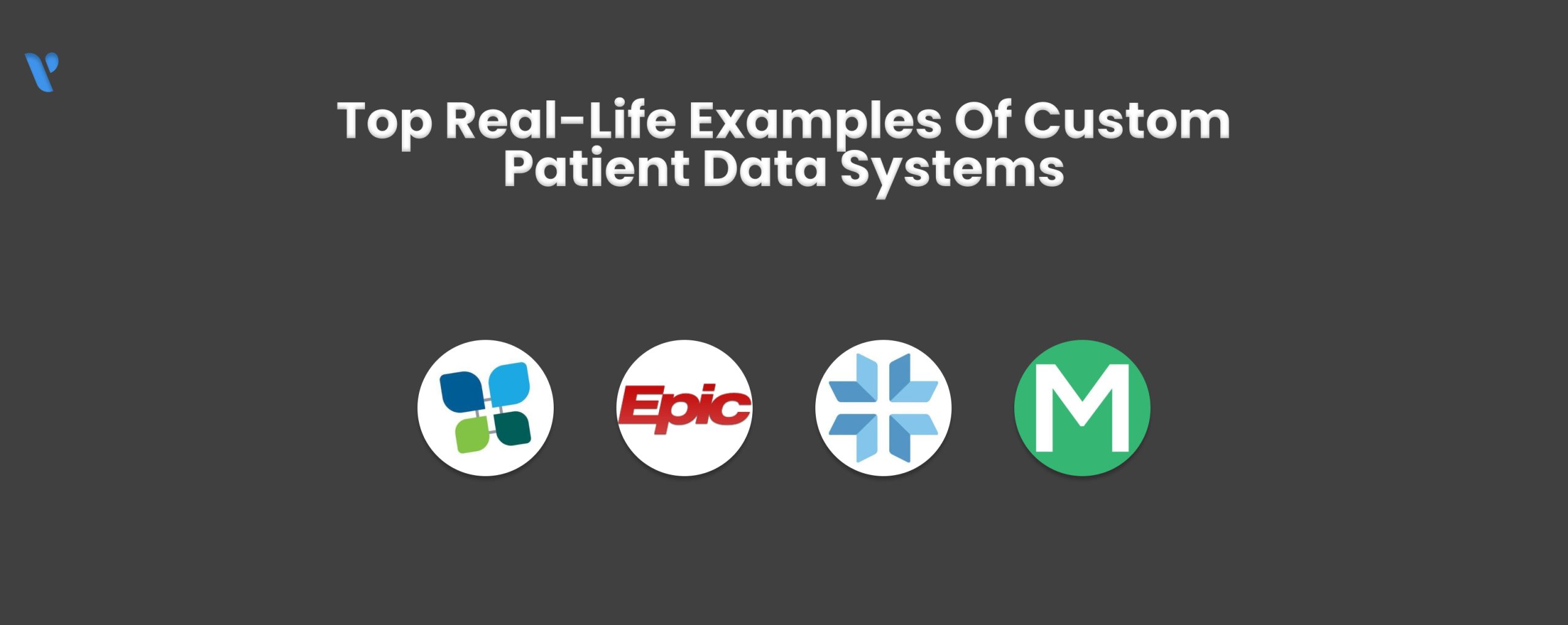Tips to Build Custom Patient Data Management System Development in 2025

A custom patient data management system is important for healthcare providers because it helps healthcare industry to organize patient information. Effective applications for patient record management can simplify operations, eliminate on paperwork, while improving patient care.
In 2025, with healthcare technology developing at an explosive rate, custom patient data management systems will be necessary to fulfill strict laws, improve patient care, and automate operations. A custom patient data custom management system requires careful preparation, whether you’re a software developer, healthcare provider, or med-tech startup. This tutorial will guide you through all the necessary handles to ensure that your system satisfies modern requirements, from planning to launch.
An app designed to handle and arrange patient data in healthcare industry is called a custom patient data management system. Custom systems are developed to match the unique requirements and procedures of a single hospital, clinic, or healthcare provider, in contrast to ready-made solutions that include general features for many healthcare organizations.
It is possible that off-the-shelf solutions will not meet every healthcare provider’s specific demands. It is possible to create a custom data management system that will meet your unique needs, work seamlessly with your existing systems, and expand with your practice as technology improves.
A custom data management system provides numerous important advantages by providing solutions that have been customized to meet the demands of medical professionals. Lets look over them:

A customized solution is created to meet the unique requirements of your medical facility. It is customizable to fit your workflows, procedures, and legal requirements—unlike generic solutions. This eliminates the need for manual data handling and improves the efficiency of your operations.
Protecting patient data is essential in considering strict laws like HIPAA. Strong security measures, such encryption, secure access restrictions, and frequent upgrades to prevent against new threats, are included into custom systems to protect sensitive data.
Administrative procedures run more smoothly when regular duties like billing, appointment scheduling, and record-keeping are computerized. As a result, there are less human errors and staff members have more time to devote to patient care rather than paperwork.
As your practice grows, a custom system can be adjusted to fit new needs and features. Whether you’re opening new locations or adding new technologies, a personalized system can change with you without affecting your current operations.
Healthcare professionals may make more rapid, sound decisions when they have centrally located and conveniently accessible patient records. Better care outcomes are achieved through improved diagnosis accuracy, treatment planning, and general management when all patient data is in one location.
All patient data is kept in one easily accessible location at a central location. To make information easier to organize and locate, this includes personal information, medical histories, treatment records, and test results.
For seamless system navigation, a simple and user-friendly interface is essential. The user experience gets better and the requirement for training is decreased with customizable dashboards, easy listings, and fast search options.
It is essential to have real-time access as well as updates of patient data. By ensuring they are always up to date on the most recent information, it helps medical professionals make better decisions and deliver treatment on time.
Integrating with other healthcare systems like Electronic Health Records (EHRs), Laboratory Information Systems (LIS), and pharmacy management systems is key for smooth data sharing and improving workflows. This helps to reduce on manual data entry and lowers the chance of mistakes.
Deep analysis of patient data is possible with powerful analytics and reporting technologies. Customized reports, data visualizations, and analytical tools support decisions based on evidence and enable the tracking of patient outcomes and trends.
In order to ensure that a custom patient data management system meets the unique requirements of healthcare providers, it is an important task that requires careful preparation. Here’s a quick, step-by-step tutorial on creating a safe, functional custom data management system:
The first step in building a custom patient data management system is to clearly define what you need and want. Talk with everyone involved, including healthcare providers, administrators, and IT staff, to understand their needs and expectations. Identify key features like data storage, real-time access, security, and integration with other systems. To help you through the development process, put these needs in writing.
Finding the right technological stack is essential to the Custom Patient Data Management’s success. Select the databases, frameworks, and programming languages to be used. For data storage, you may go with a stable database like PostgreSQL or MySQL, and for backend programming, you might go with Python or Java. Verify that security, scalability, and system integration are supported by the technological stack.
Creating a blueprint for the compatibility of the Custom Patient Data Management System components is known as system architecture design. This include configuring the system’s user interface, data storage, and connectivity, amongst its many components. Plan the architecture using design tools and diagrams, being careful to include features for safe data processing, central storage, and real-time data access.
Handling sensitive patient data requires top-notch security. Use strong security measures like data encryption, secure login methods, and regular security checks. Follow relevant regulations, like HIPAA, to keep patient information private and secure.
Start the development phase by writing the code based on the design specs. Add key features like data storage, real-time updates, and user access controls. Test the system thoroughly during development, including unit testing, integration testing, and user acceptance testing, to find and fix any problems.
Use strong security measures to keep patient data safe from unauthorized access. This includes encryption, secure authentication, and regular security checks. Make sure the system follows relevant regulations and standards, like HIPAA, to protect data privacy and security.
Before launching, do a final round of testing and get user documentation ready. Train healthcare staff on how to use the new system. Roll out the Custom Patient Data Management System in stages, starting with a pilot phase to fix any issues before the full launch.
After the system is deployed, offer continuous support to fix any technical problems and make sure it still fits the healthcare organization’s needs. Regularly update the system to add new features, boost security, and improve performance.
Custom patient data management systems are essential for handling patient information in today’s healthcare industry. Creating and keeping up a custom PDMS can be tricky, but knowing the challenges can help providers avoid problems and achieve better results.

One of the main challenges of creating a custom Patient Data Management System is the high development cost. Building the system from the ground up requires a lot of money for software development, design, and testing. This can be especially tough for smaller healthcare practices with tight budgets. Although custom solutions have their advantages, the initial expense can be a big obstacle.
It might be difficult to integrate a custom patient data management system with current healthcare systems like LIS and EHRs. Careful design and implementation are required to ensure that the new system integrates seamlessly with the existing procedures and technology. Integration can reduce efficiency and cause disruptions if it is not done correctly.
Introducing a new custom Patient Data Management System usually means healthcare staff will need to adjust to new workflows and interfaces. Training them to use the system effectively can take time and might meet resistance from those who are used to the old processes. This adjustment period can slow down operations and affect productivity until everyone becomes comfortable with the new system.
Regular maintenance is necessary for a custom patient management system to handle software upgrades, correct faults, and comply with new regulations. It can be difficult to keep the system updated, particularly if the original developer team isn’t present. The system’s performance may suffer from being outdated or prone to errors due to improper maintenance.
Here are some top examples of custom patient data management system that are making a big difference in the industry:

Epic Systems is a widely-used custom patient data management systems for large healthcare organizations globally. It has a central database, simple system integration, refined data analysis features, and is very adaptable. Large medical centers like Cleveland Clinic and Mayo Clinic manage millions of patient records using Epic, which improves patient care, processes, and real-time data access.
Cerner Millennium is a fantastic choice for managing patient data. It may be scaled to fit any kind of healthcare organization and has a wide range of capability along with seamless system connections. It improves patient experience, reduces mistakes, and strengthens care coordination. AdventHealth and Intermountain Healthcare use it.
Clinics and hospitals use Allscripts Sunrise, a flexible patient data management system. It adapts to different workflows, supporting population health tracking, care management, and customized therapies. Institutions like Northwell Health and Baptist Health use it to enhance data management, improving care coordination and health outcomes.
Meditech Expanse is a cloud-based, customized PDMS giving a unified EHR solution. Community hospitals embrace it because it is affordable, enables real-time data interchange, and allows for complete patient management across care environments. It is used by hospitals such as Hancock Regional Hospital and King’s Daughters Medical Center because to its adaptability, that improves patient care and workflow efficiency.
Building custom patient data management systems for hospitals is an important part of going digital. A Hospital Management System brings many benefits, including better management and efficiency. Healthcare providers should also invest in custom clinic management software to stay competitive.
However, developing a custom patient data management system isn’t simple. Before beginning, the above tips need to be taken into account. Choosing the ideal partner with the knowledge and experience to support you through any obstacles is the most important component.
If you are looking for a trusted vendor, Contact YeasiTech. Our team of developers will consult you on hospital management system development.
For the purpose of organizing and managing patient data, specialized software is called a Custom Patient Data Management System . It centralizes test results, medical histories, and treatment notes, making it easier for healthcare professionals to access, update, and analyze the data.
Custom patient data management system solutions are tailored to a healthcare organization’s specific needs, offering greater flexibility, customization, and integration than standard systems. This improves efficiency, data management, and patient care.
Look for centralized data storage, real-time updates, a user-friendly interface, strong data security, system integration, advanced reporting, and scalability. These features ensure efficient data management and enhance patient care.
The timeline for implementing a custom PDMS depends on system complexity and requirements, typically involving planning, development, testing, and training phases, which can span several months.
The cost of a custom PDMS varies based on complexity, features, and organization size. Get a detailed estimate from a vendor like YeasiTech based on your specific needs.
YeasiTech is a trusted IT service partner with 8+ years of experience, empowering 250+ businesses with scalable web, mobile and AI solutions.
Explore related topics to broaden your understanding and gain actionable insights that can transform your strategies.